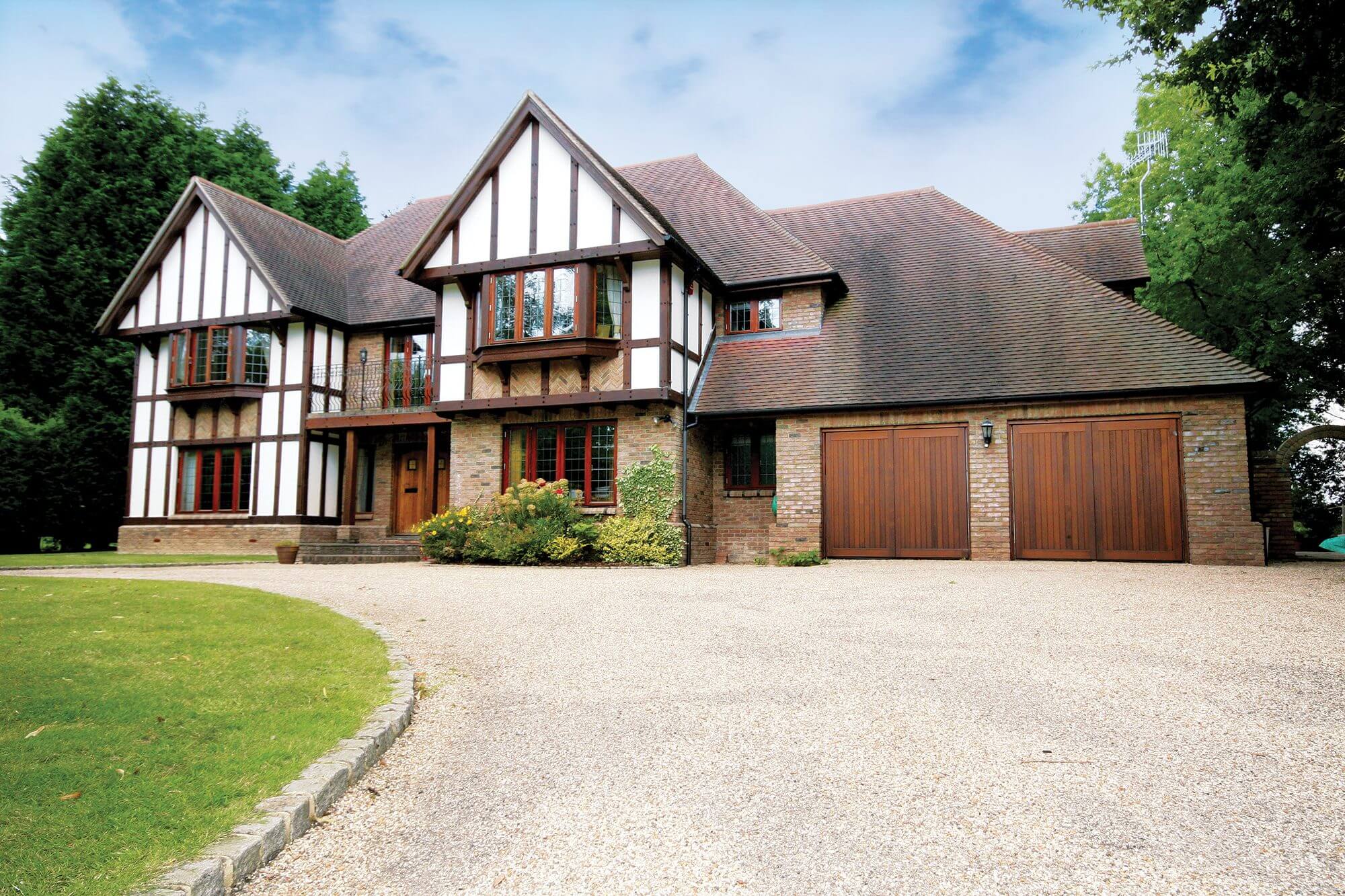Table Of Content

The most extravagant homes in this style had towers, ideal spaces for breakfast nooks, offices and sitting areas. The roofs of Tudor homes and buildings were generally steeply pitched, with a strong emphasis on height and verticality. This design helped to create a sense of grandeur and height while providing ample space for the large chimneys and fireplaces. They come in many variations but are most commonly tall and narrow multi-paned windows. Other unique window features include “oriel windows,” which are bay windows that extend beyond the home’s façade and are typically located on upper floors.
Where Did Tudor Style Houses Go?
As mentioned, the original Tudor houses were not usually built with many fully opening windows, although more modern examples of the style do tend to have better ventilation. When a person makes reference to the Tudors, we might immediately think of Henry VIII and the wives he treated so miserably. However, most people might not be aware that during the time Henry sat upon the British throne, a very distinct style of architecture came into vogue. The Tudor and Tudor-style aesthetic was so prevalent internationally for so many years, that the chances of you having been exposed to it is almost certainly 100 percent. With the help of ELLE Decor A-List designer Steven Gambrel and his wealth of knowledge, we’ve pulled together a primer (do you feel like you’re back in English school?) on Tudor-style homes.
Building by building
Tudor style houses, also called Tudor Revival or Mock Tudor, are two-to-three-story homes with brick exteriors featuring large portions of white stucco and decorative half-timbering. These homes have a romantic and slight medieval appearance, making them a truly unique home style. Heavy chimneys and steeply pitched roofs give Tudor-style homes medieval flavor. The windows of this home include a lot of casements, another characteristic of the style. Commonly present on Tudor-style homes, ornamental half-timbering mimics medieval construction techniques. Although timber framing was integral to the structure of medieval houses, most examples on modern Tudor homes are purely decorative.
Tudor Architecture: History, Features, and Examples
They also installed a grass cloth ceiling treatment and sisal rug to add texture. Jerome Thiebault created a polished and petite bathroom complete with storage and a shower. Troweled cement plaster was applied to the walls, and handcrafted Zia tile adds pattern to the floor. Below, tour the inspiring rooms and outdoor spaces of the 2024 Pasadena Showcase House of Design.
A striking feature of the Tudor Style is its use of glazing and the size and positioning of windows. Utilizing the lattice glazing method, the windows were traditionally made of interconnecting diamonds or “lozenges” separated by strips of lead. Another distinguishing feature of a Tudor home is cross gables with mock beams.
As such, a great way to replicate this look is to invest in casement windows instead of cheaper double or single-hung styles. If you’re really determined about it, you can even add custom windows made to imitate this style. The roofs on some Tudor homes may reach all the way or almost all the way to the ground below. You often see this with A-framed structures, such as small, triangular cabins or offset entryways. Rooflines are one of the harder aspects of a home to change, but this is possible, especially if you’re building a new one. If you don’t want to change the entire roofline, though, consider adding gabled dormers instead.
After 40 years, a new expedition under Sir George Maxwell began to rediscover the lost legendary plateaus and as a tribute to the man who discovered the plateaus, the area was named after Sir William Cameron. The lake house was built in the area by Retired British Colonel Stanley J. Foster in 1966, which is still currently in use as a hotel. The original house at Pashley was used as a hunting lodge by Sir Geoffrey Boleyn, Lord Mayor of London in 1457 during the Wars of the Roses and held the manor until Queen Anne Boleyn’s downfall in 1536. The property remained in the possession of the Moreton family until ownership was transferred to the National Trust in 1938. In the early 12th century, the manor was passed onto Matthew de Bromale, whom his father founded the Bromale family and naming himself after the manor.
Some uncommon yet striking features make a traditional Tudor-style home relatively easy to identify. These fundamental elements can help you distinguish a Tudor-style home from others. Each and every home style has its pros and cons – and it all depends on your needs as a homeowner. Find out some of the common pros and cons of Tudor style houses to determine if it’s the right style for your homeownership goals.


They added extra light and space to the Tudor-style home and also helped to improve elegance. This elaborate style of house eventually went out of fashion after WWII when tight budgets demanded a simple way of life. If you drive through an older suburban neighborhood, it's easy to designate a street that was built pre-WWII or post-WWII. Before the war, you would find a lot of brick Tudors but in the 1950s, many of these homes were replaced with efficient and straightforward Cape Cod-style homes. Even though Tudor revival homes were pricey to manufacture, you can still find them in all sizes from small cottages to sprawling mansions. Several European-trained architects designed and built these homes for well-to-do families, particularly in the 1920s and 1930s.
Designer Lara Hovanessian packed plenty of bold design elements into the powder room and adjacent lounge. A moody House of Hackney floral wall covering lines the dressing area, which leads to a powder room accented with a Kelly Wearstler’s Graffito II from Walnut Wallpaper. A black-and-white triangular mosaic tile floor by Artistic Tile from Mission Tile West puts a contemporary twist on the classic checkered pattern. A palette of whites, deep blues, and gold creates an elegant atmosphere in the formal living room, which was designed by Rachel Duarte. The designer established two seating areas within the space, including a cozy gathering spot with chaise longues that flank the original carved marble fireplace.
Jessi and Braden Nichols' Tudor-style home in the Overbrook Neighborhood - Greenville News
Jessi and Braden Nichols' Tudor-style home in the Overbrook Neighborhood.
Posted: Wed, 25 Oct 2023 07:00:00 GMT [source]
Many different designs and patterns exist, but the technique is most often used on upper stories and around windows. The low multi-centred Tudor arch was another defining feature and the period sees the first introduction of brick architecture imported from the Low Countries. Some of the most remarkable oriel windows belong to this period.[1] Mouldings are more spread out and the foliage becomes more naturalistic. During the reigns of Henry VIII and Edward VI, many Italian artists arrived in England; their decorative features can be seen at Hampton Court Palace, Layer Marney Tower, Sutton Place, and elsewhere.










